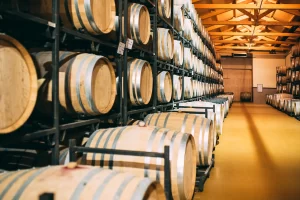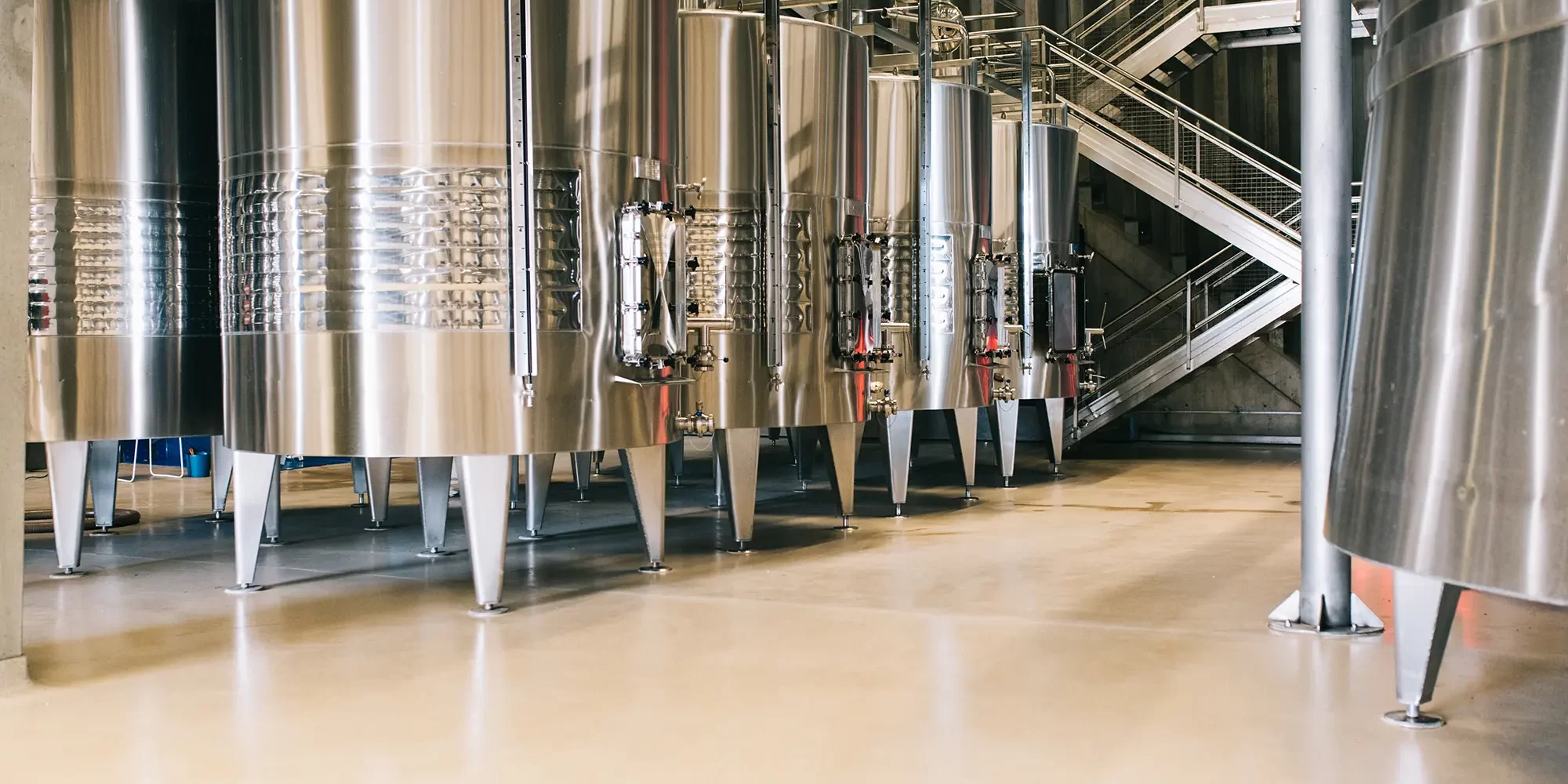The wine-making process is one that demands precision, care, and cleanliness.
From fermentation tanks to barrels, any contamination can negatively affect the quality, taste, and safety of the wine.
As such, maintaining sterile conditions throughout the winery is critical. Chlorine Dioxide (ClO₂) has emerged as an effective solution for sanitising equipment and barrels, offering wineries a reliable method to preserve the integrity of their products. Here, we explore how Chlorine Dioxide enhances winery operations and safeguards wine quality.
The Role of Chlorine Dioxide in Sanitisation
 Chlorine Dioxide is a powerful oxidising agent known for its ability to disinfect without forming harmful by-products. Unlike chlorine, which reacts with organic materials to create potentially hazardous compounds, Chlorine Dioxide offers a cleaner, safer approach to sanitisation. Its selective oxidation makes it ideal for use in wineries where maintaining the character and flavour of the wine is paramount.
Chlorine Dioxide is a powerful oxidising agent known for its ability to disinfect without forming harmful by-products. Unlike chlorine, which reacts with organic materials to create potentially hazardous compounds, Chlorine Dioxide offers a cleaner, safer approach to sanitisation. Its selective oxidation makes it ideal for use in wineries where maintaining the character and flavour of the wine is paramount.
One of the key benefits of using Chlorine Dioxide in winery operations is its efficacy in eliminating harmful microorganisms, including bacteria, moulds, yeasts, and spores. These pathogens can easily thrive in damp, cool environments where wine is stored and aged, making effective sanitisation critical. Chlorine Dioxide penetrates biofilms, a common challenge in winemaking environments, ensuring that all surfaces are thoroughly disinfected.
Equipment Sanitisation
In winery operations, the cleanliness of fermentation tanks, pipelines, and bottling lines directly impacts the final product. Chlorine Dioxide is widely used to sanitise this equipment due to its broad-spectrum antimicrobial properties and low residue formation. As it is non-corrosive at typical usage concentrations, Chlorine Dioxide can be safely used on stainless steel equipment and other materials commonly found in wineries.
Traditional cleaning agents like caustic soda or chlorine can leave residues or alter the taste of the wine if not properly rinsed away. Chlorine Dioxide, by contrast, breaks down into harmless by-products, ensuring that no off-flavours or chemical residues are left behind. This makes it the ideal choice for sanitising tanks and pipes between batches, helping wineries to maintain product consistency and quality.
Barrel Sterilisation
Wine barrels, particularly oak barrels used for ageing, are essential for imparting unique flavours and characteristics to wine. However, they also present a sanitisation challenge. Barrels are porous and can harbour microorganisms that can spoil the wine. Traditional methods of cleaning barrels, such as using steam or sulphur dioxide, are not always fully effective and may leave residues that affect the wine’s taste.
Chlorine Dioxide is highly effective in penetrating the pores of wooden barrels, eliminating microbes without leaving harmful residues. By using Chlorine Dioxide to sanitise barrels between uses, wineries can ensure that each batch of wine is protected from contamination, preserving the desired flavours and aromas. Additionally, as Chlorine Dioxide does not alter the pH of the wine, it is a safe and reliable choice for barrel sterilisation.
Ensuring Wine Quality and Safety
The use of Chlorine Dioxide in winery operations offers a comprehensive solution for maintaining the highest standards of hygiene, protecting the quality and safety of the wine throughout the production process. With its ability to disinfect equipment, barrels, and surfaces without affecting the wine’s character, Chlorine Dioxide helps wineries achieve consistent, high-quality results.
To learn more about how Chlorine Dioxide can benefit your winery operation, or for further information on sanitisation solutions, contact Scotmas today.






